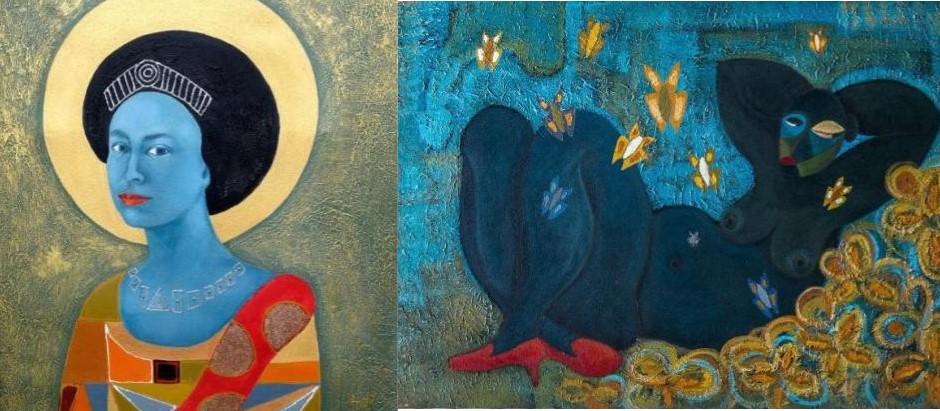Krispin Joseph PX
African art uses colonised memories and female representation as a political tool to tell their presence and survival. Female representation in African art strongly articulates the ‘African mother’ concept that questions colonial ideas and art practices. Using the ‘Mother’ and ‘Female’ notions brings together the different and complex ideas of ‘Africa’ that challenge the Western idea of the motherland.
As a political institution, African visions of women echoed in the art practice of the contemporary art scene. When colonialism was impacted, the artist’s community started to resist the visual impact of the colonial gaze. The political patronage of art is a growing concern in contemporary African art practice, and Google Art and Culture bring a new dimension to African Art as ‘Female Representation in Contemporary African Art’.
The period that ends the artwork glorifies colonialism and political patronage. African artists start to work on authentic African content and concepts. In Google Art and Culture, they bring the artists who portray African women as women, not as ‘Goddesses or witches.
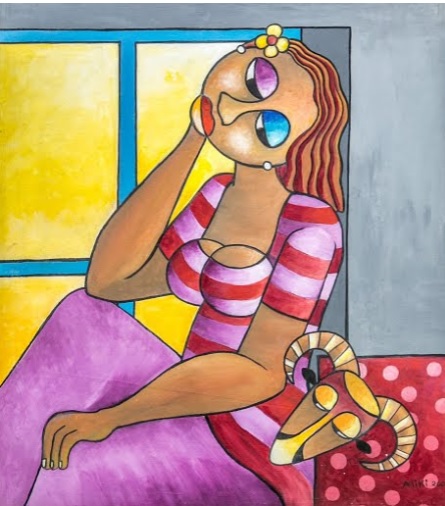
credit: Google Art and Culture
Tolu Aliki (b. 1976) is a contemporary self-taught artist who focused on figurative composition and landscape as the subject of personal narratives of his time and space. Tolu Aliki’s painting, Outdoor With A Friend (2009), plays a compositional ambiguity in appearance. Tolu Aliki’s Visual essay on the woman’s life in contemporary African society is arguable as a body of presence, which is the absence in the outdoors; what makes a woman sitting in a window seat with a bullhead is an outdoor activity. What is outdoor in this painting? Tolu Aliki’s artworks portray passion, love, family and everyday interactions.
Moreover, his works are renowned for their flair and originality in applying colour, depth of scope and aesthetic beauty, and the political body of African women and landscape. Art for Aliki is a deeply personal- subject matter, and the fondness for painting lifelike affairs, an innate desire to depict himself. The ethnic and cultural identities of the people and environs also concern Aliki as an art practitioner.
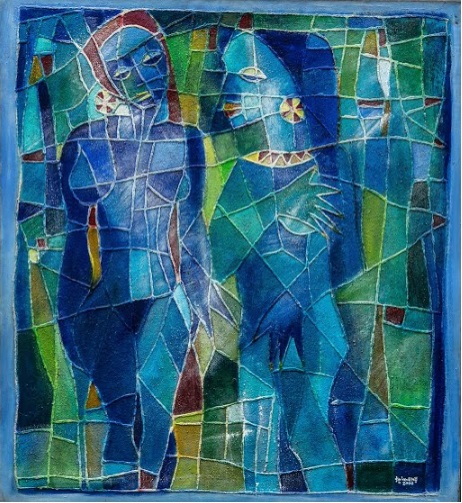
credit: Google Art and Culture
Tola Wewe’s untitled work depicts the narrative element of the African spirit of women’s life. The influence of the three significant elements in Tola’s artwork is seeable as the inner beauty and conflict; (1) academic study, (2) the research program in Water spirit mask and (3) the society, particularly the Yoruba society. Tola uses the Ona symbols of the Yoruba tribes as the theme of the paintings, and that makes his works a representation of tribal life, as Wewe describe himself more as a witness than an author of that culture. Once Wewe explains it well, “communicating with the spirits of the ancestors and drawing out the invisible spirits – the Anjonnu, Emere and the Ebora- who make the artworks. I am the vehicle, and they are the drivers. We go on these strange journeys to the most remote ends of imaginative experience.”
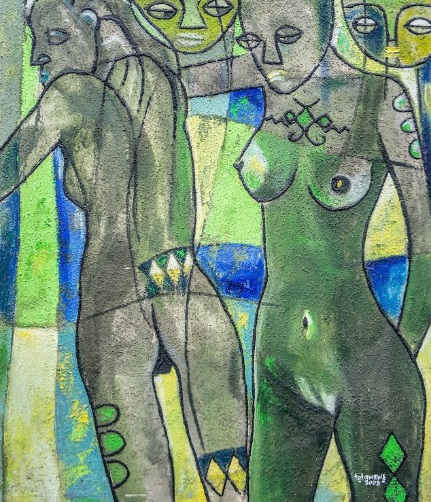
credit: Google Art and Culture
The representation of the female body in African art is part of an ongoing discourse and is undergone a metamorphosis through cultural identity. The trace of the past is influenced and still prevalent in today’s art discourse.
Google Art and Culture bring this artist under the tagline of ‘this body of work is a junction where the old and new meet through the works of several revered African artists, after the dynamism of feminist discourse in recent decades.
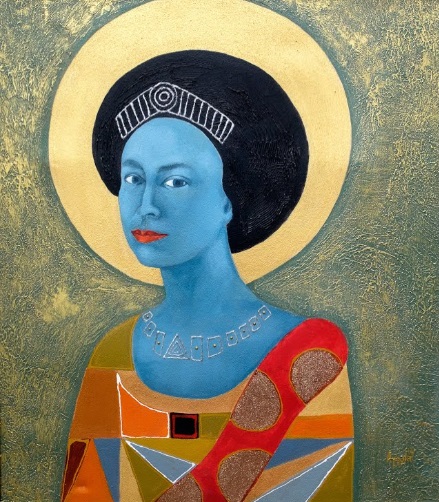
Ayoola Gbilahan turned this art discourse into another area of compositional opacity. Ayoola Gbolahan is a gifted and prolific artist who completed academic study and residency with renowned Nigerian artist Tola Wewe. In Blue Elizabeth, Ayoola brings a new perspective on the Christian commissioned artwork in the medieval period of Western art. Ayoola’s pictorial representation ironically depicts the thematical concepts of purity, chastity and celibacy by narrating women in a ‘Queen’ or a Virgin Mary. Ayoola’s work is a visual story of African women in the modern period, as a commissioned Renaissance time painting which terminated the patron’s presence from the economic substance. ‘Portraits of women focused on the significance of feminine beauty and its appeal to the viewer from an archetypal social role perspective, written in Google Art and Culture.
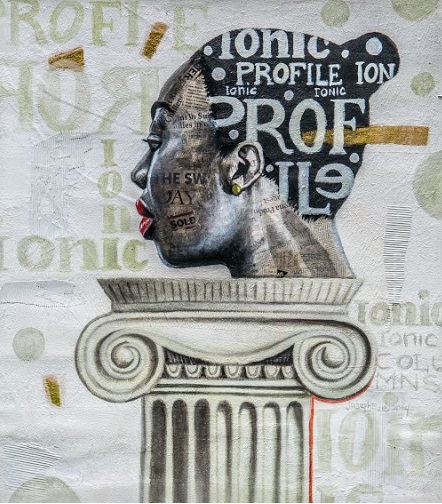
Credit; Google Art and Culture
Joseph Eze’s work uses the freedom and possibilities of different mediums, like painting, sculpture, and installation techniques, and he is also very inquisitive in Architecture and Design, as well as the fashion endeavour. In his ‘Afro-Iconic’ (2014), Eze brings the cultural references that span diverse periods in African cultural history that juxtaposed and meshed with the bold brushstrokes—Joseph Eze’s idea of bringing African women’s identity into a pedestal. Eze points to the reality that there is an inherent uncertainty in defining an authentic sense of “African” or “Western” value systems. The language is unspoken publically, and its terms make an overburden to the visual language itself. The shocking element of popular culture in an African art practice brings new possibilities for many, like Eze.
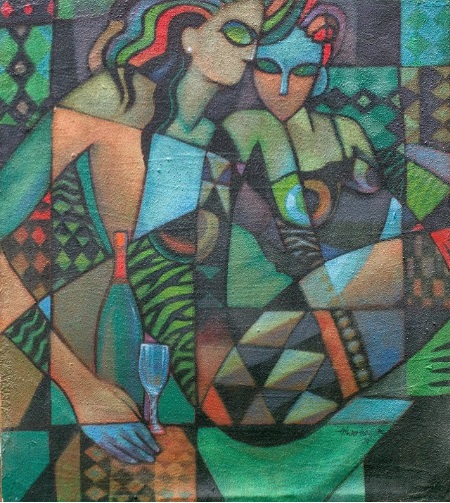
Chief Bob Aiwerioba (b. 1967) is an experimental artist who works on many things, including the trajectory through his life and strongly alludes to cubist techniques and influences. Aiwerioba also works with many mediums, including architecture, pottery and sculpture.
Uthman Wahaab’s Just Orgasm (From The Languishing Series- 2017) is a fruit of an ongoing process that occurred in African Art discourse for many ages. Wahaab’s art practice is an overarching appeal in the social wonder and eschews a constant use of medium or distinct aesthetic style. Wahaab’s principal concern is creating a new visual vocabulary that intentionally abandons traditional forms of depiction in order to document the ongoing history and unfolding reality.
Credit: Google Art and Culture


